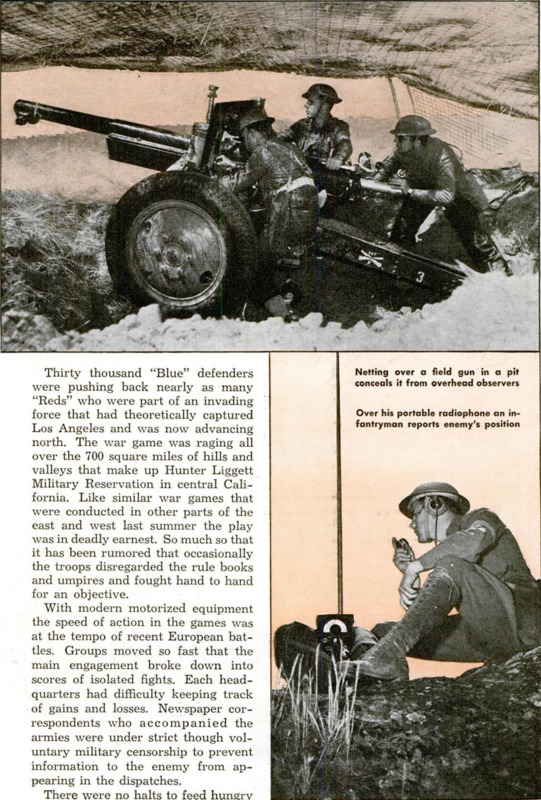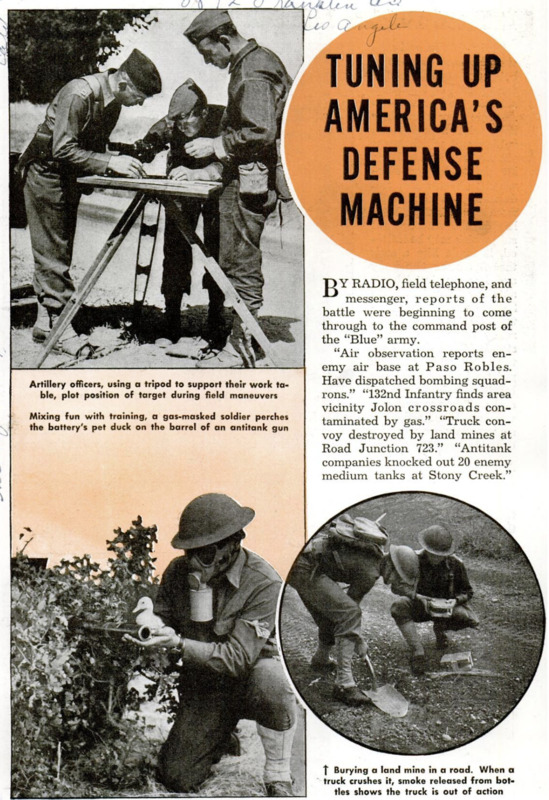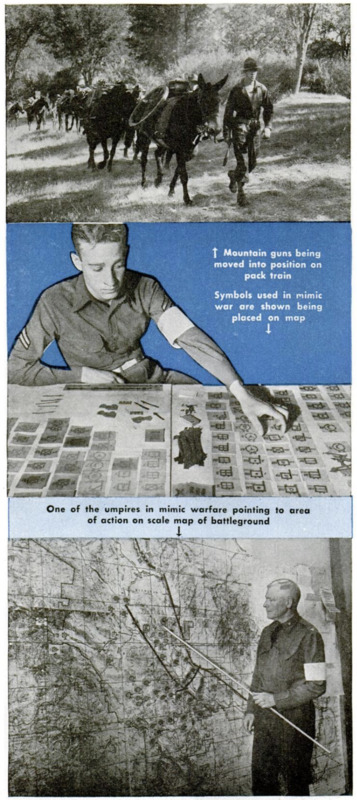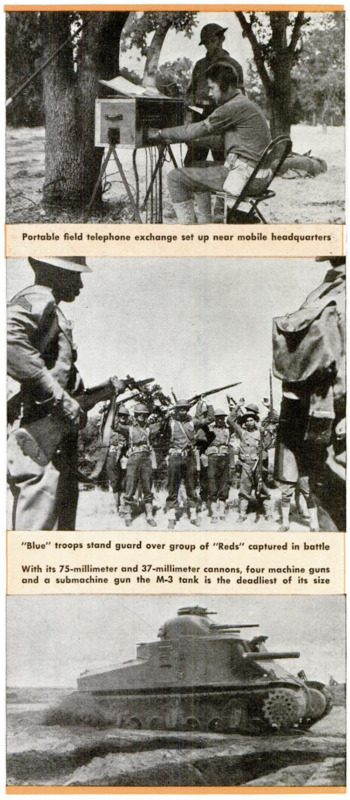Tuning Up America's Defense Machine
Contenuto
- Titolo
- Tuning Up America's Defense Machine
- Article Title and/or Image Caption
- Tuning Up America's Defense Machine
- Lingua
- eng
- Copertura temporale
- World War II
- Data di rilascio
- 1941-10
- pagine
- 8-11, 192-193
- Diritti
- Public Domain (Google digitized)
- Sorgente
- Google books
- Referenzia
- Paso Robles
- Jolon
- Stony Creek
- Los Angeles
- Hunter Liggett
- California
- Europe
- Uncle Sam
- World War I
- Archived by
- Enrico Saonara
- Alberto Bordignon (Supervisor)
- Copertura territoriale
- United States of America








